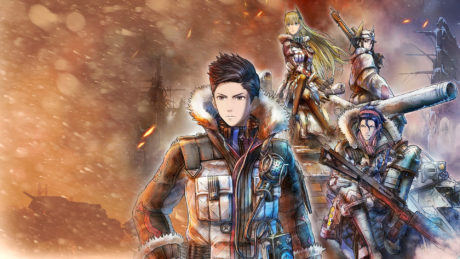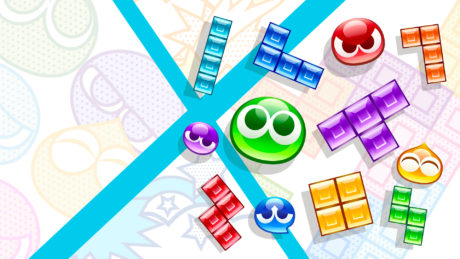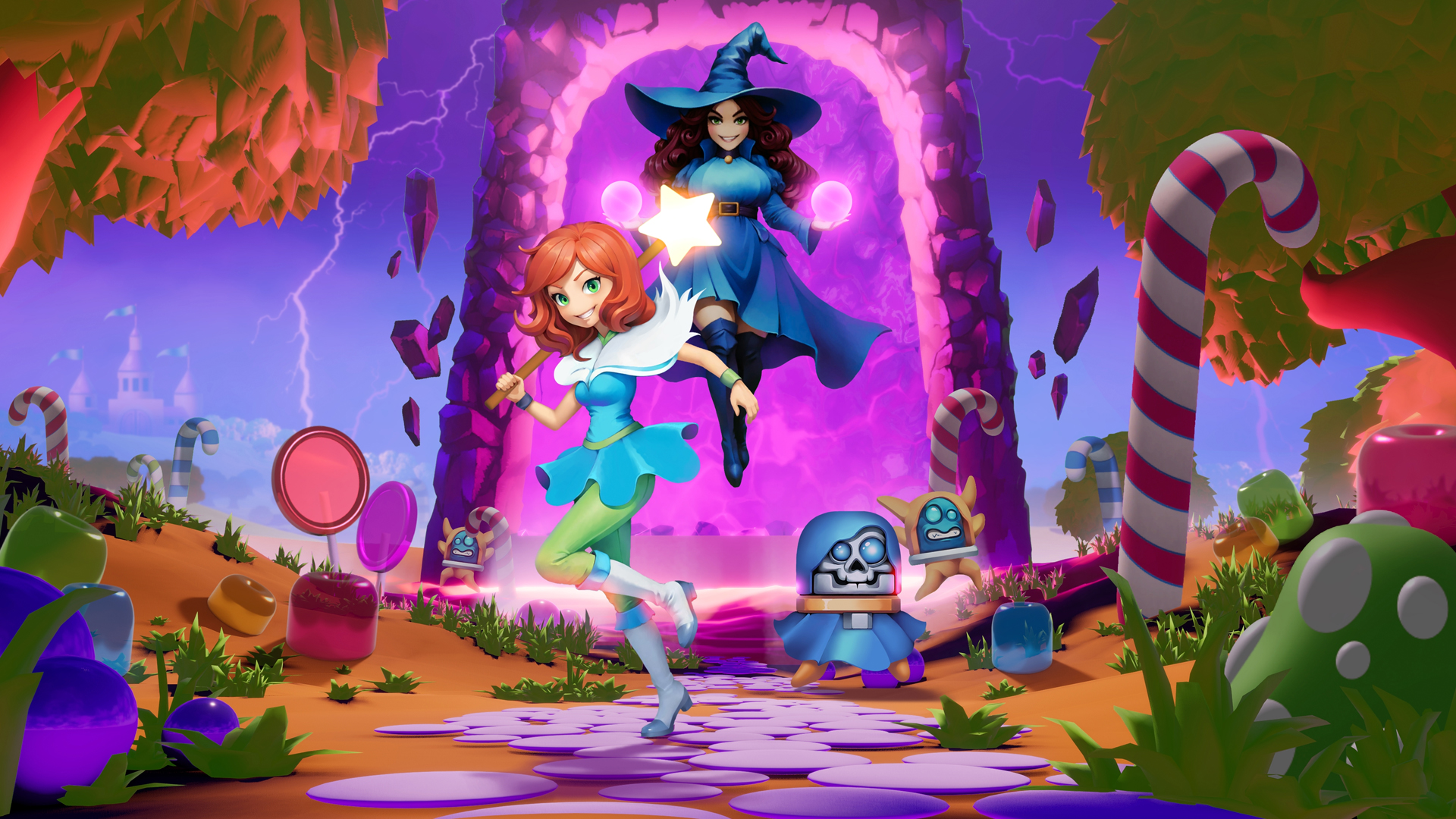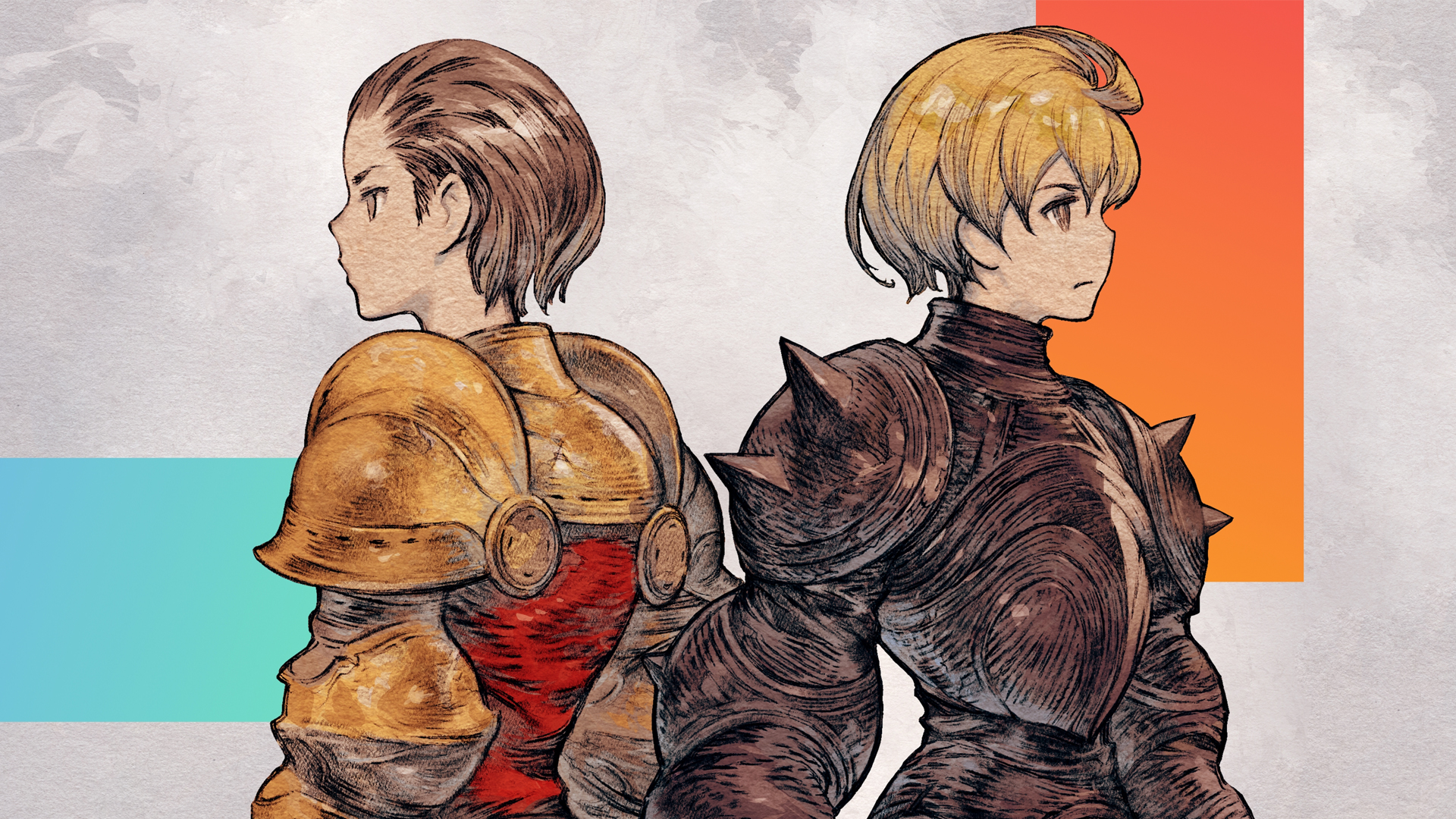Purrr....
- Voice acting
- Cleaner for HD
- Better camera
- Hours and hours of gaming
- Poke-demon
Hisss!
- Cutscenes not remastered in HD
- Models still dated
Platform
Switch, PlayStation 4, PCPublisher
SegaDeveloper
AtlusSeries
Shin Megami TenseiGenre
RPGPlayers
1File Size (Minimum)
8.5 GBRelease Date (NA)
May 25, 2021Release Date (JP)
Oct 29, 2020Filed Under
Shin Megami Tensei III Nocturne HD Remaster for the Nintendo Switch, PlayStation 4, and PC is an updated version of the original PlayStation 2 game, Shin Megami Tensei: Nocturne (aka Shin Megami Tensei: Lucifer’s Call in Europe). The remaster received a lot of cleanup for its high definition debut, adding voice acting, a refreshed script, a new difficulty mode, special appearances by Raidou (Devil Summoner) and Dante (Devil May Cry), and a suspend save feature. In short, it’s a great RPG to revisit or to explore for the first time.
A Whole New World
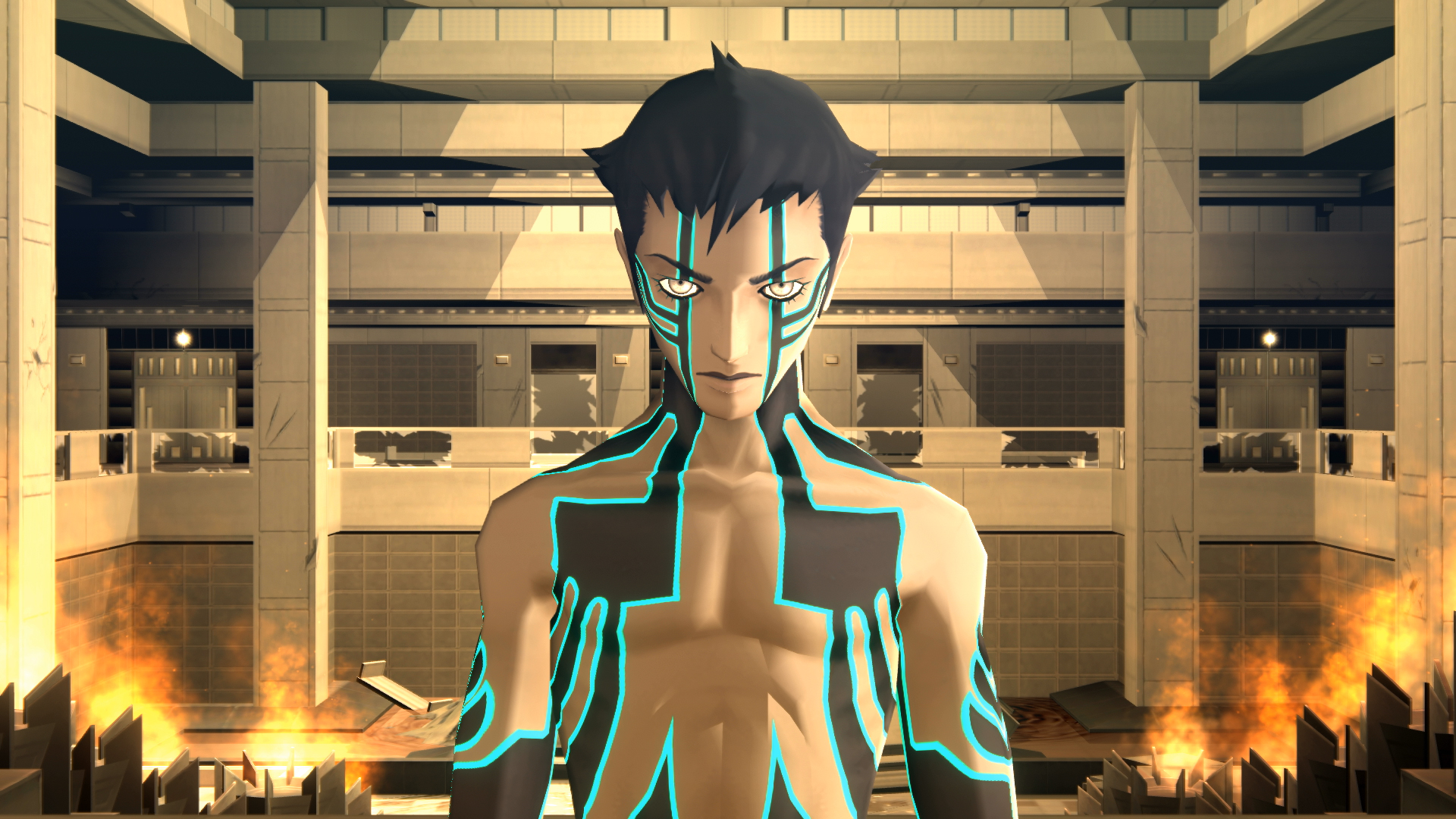
Shin Megami Tensei III Nocturne drops you into a post-apocalyptic world. Not only that, you have been turned into a demon, but you do get a little help from two mysterious figures who endow you with a Magatama (more on that later). Your friends who have survived the apocalypse were also thrown into the new world and are making their own way. You’ll eventually cross paths, but you’ll need to focus on your adventure to find the truth about what’s going on.
Compared to most RPG storylines, the heroes usually prevent the world from going into turmoil. Not many narratives have pulled off where the villain wins, such as in Final Fantasy VI where the heroes fail and the enemy wins midway through the game. Tensei III feels similar, where the turn of events happen at the beginning.
Expect to sink in a large amount of hours on your journey through the ruined world. Just doing the story without any extras can clock in at around 50 hours, with many more for that 100%. If that’s not enough, the HD remaster offers a new difficulty level: an easier MERCIFUL mode. Another bonus is that the game offers a “suspend” mode to let players save their current spot at the last moment instead of making them search for a save point. Phew. Unfortunately, you have to stop the game and boot it back up if you want to use it. A quick-save option could be more beneficial or at least available.
Clean as a Whistle (Mostly)
The HD remake made many improvements, visually and otherwise. Lines are sharper and the game’s user interface (UI) is cleaned up and easier to read. Some colors are a tad washed out and models still looking dated, but players will take a cleaner PlayStation 2 game any day. Playing on HD screens with cleaner art and graphics simply makes the game more enjoyable. In addition, the camera controls in the original PS2 version had challenges, feeling like a battle in and of itself. With the HD remaster, changing camera angles feels much more normal.
The game’s soundtrack adds 27 new tracks, such as piano arrangement scores. The tracks you loved from before are still there, so no worries. Keeping most of the original intact helps make it feel like the original, even if it’s the same PlayStation 2 quality.
One of the biggest additions is voice acting. A new script was created for the remaster, improving the story and making it more impactful, and Atlus and Sega added dubbed voices on top of that. Think of the Final Fantasy Tactics remake, Final Fantasy Tactics: War of the Lions, where voice acting was added to its cutscenes. However, unlike in War of the Lions, the cutscenes in this game were barely touched. Instead of tweaking them to fit for a 16:9 ratio, the game places blurred, animated bars on both sides. Moreover, the graphical improvements made to them are miniscule at best, which is disappointing.
The general graphics and textures themselves remain mostly unchanged, too. Basically, players should expect a shinier-looking PlayStation 2 game with added content. That’s okay! If the game underwent full polygon and texture improvements, it wouldn’t be called an HD remaster but a remake. Take Final Fantasy X, for example, when Square Enix launched a remastered version, and you’ll have a general idea of what to expect.
Straightforward Battles
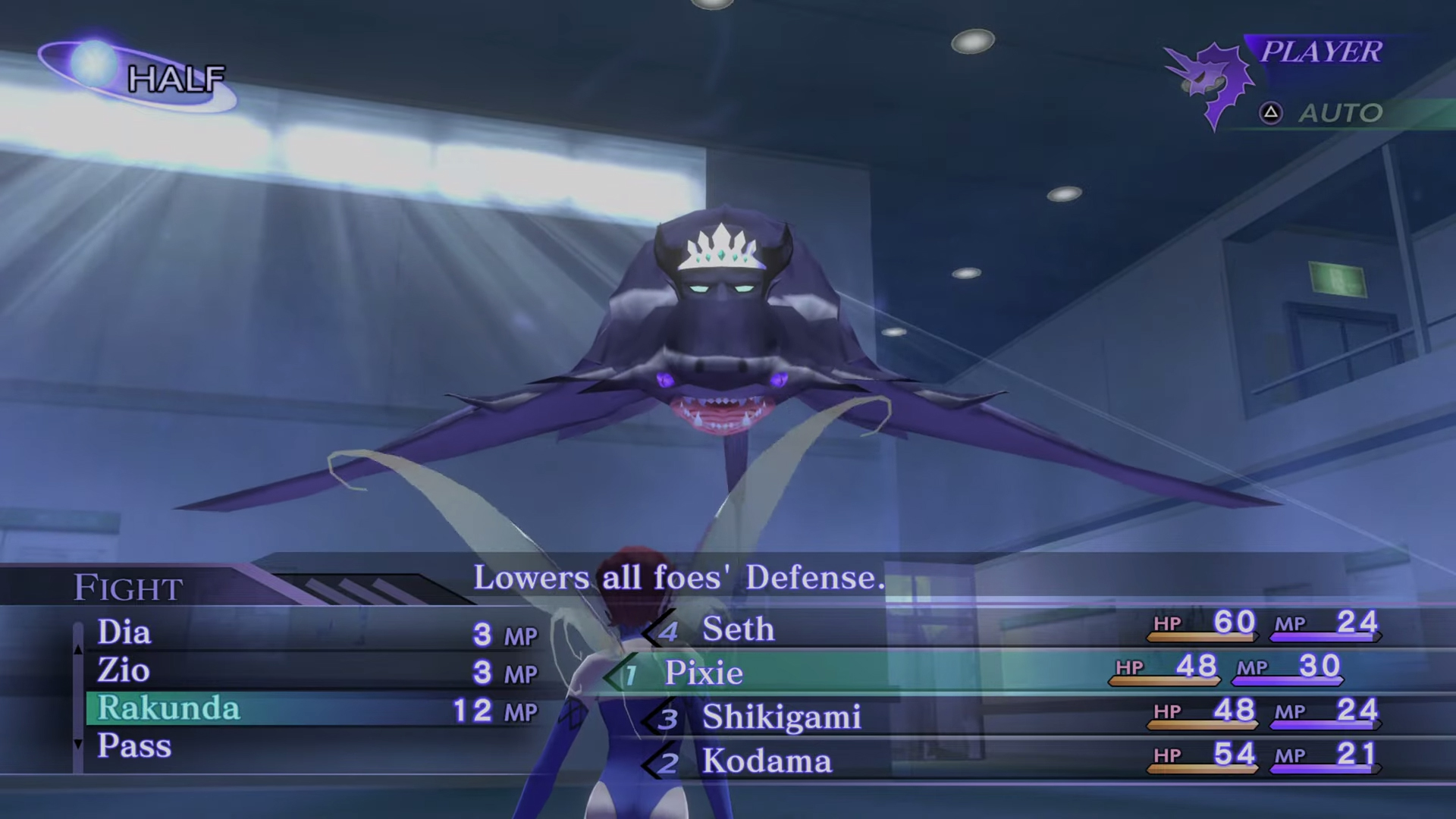
The combat system is turn based, simple, and to the point. Players make their moves, then the opposing side does the same. This goes back and forth till there is a winner. Those looking for complex gameplay may not enjoy Tensei III’s simplistic combat system, but other aspects may be of interest.
You can have four members on your team that you can command. Your demon allies have a set of moves that can give you an advantage in battle or make it drag on. For example, demons who are more physical are great for contests of brute strength but may not be the best fit in a fight that relies on magic and debuffs. Fortunately, if you forget to swap allies, you can do so during battle when the protagonist is up for action. Additionally, your demon allies cannot use items or summon. You’ll have to rely on the protagonist to make those choices. In short, trying to go through the game with pure strength alone won’t get you very far. Be sure to have a solid, diverse group that can cast various types of status boosts, healing, etc. The protagonist can’t do everything himself.
A Parasite with Tools
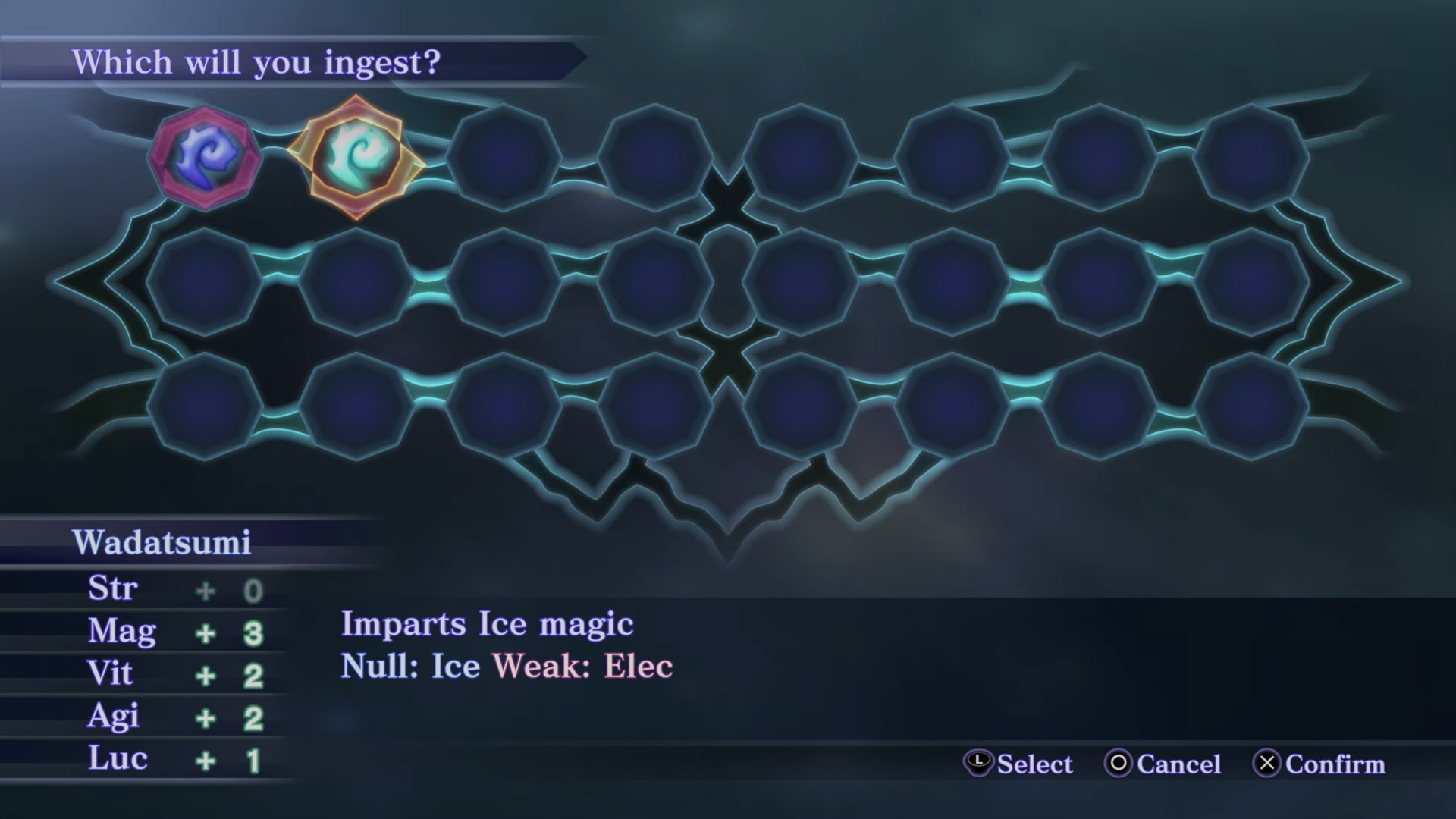
With the protagonist now turned into a demon, thanks to the gifted Magatama, you now have a standing chance to stay on your feet in the demonic world.
Your Demi-fiend protagonist can ingest different Magatama for different abilities, resistances, and weaknesses. As you level up, your Magatama will level up, too, giving the player points to use to raise your character stats, such as strength, vitality, and luck. If you’re fortunate, you can also gain extra stat increases, and/or restore your team’s health. However, the Demi-fiend can also get hit with a negative status effect, such as poison or stun, so watch out. Always be sure to have status restoration items on hand to heal yourself.
Many Magatama can be found while adventuring or purchased in shops. Whether you ingest one or not, you cannot rely on just one. While the word “ingest” sounds like a one-time thing, you can equip and reequip them at any time, making them more like an accessory or a weapon. The Magatama are set only for the protagonist, though. Your demon allies have their own unique setup.
Poke-demon?
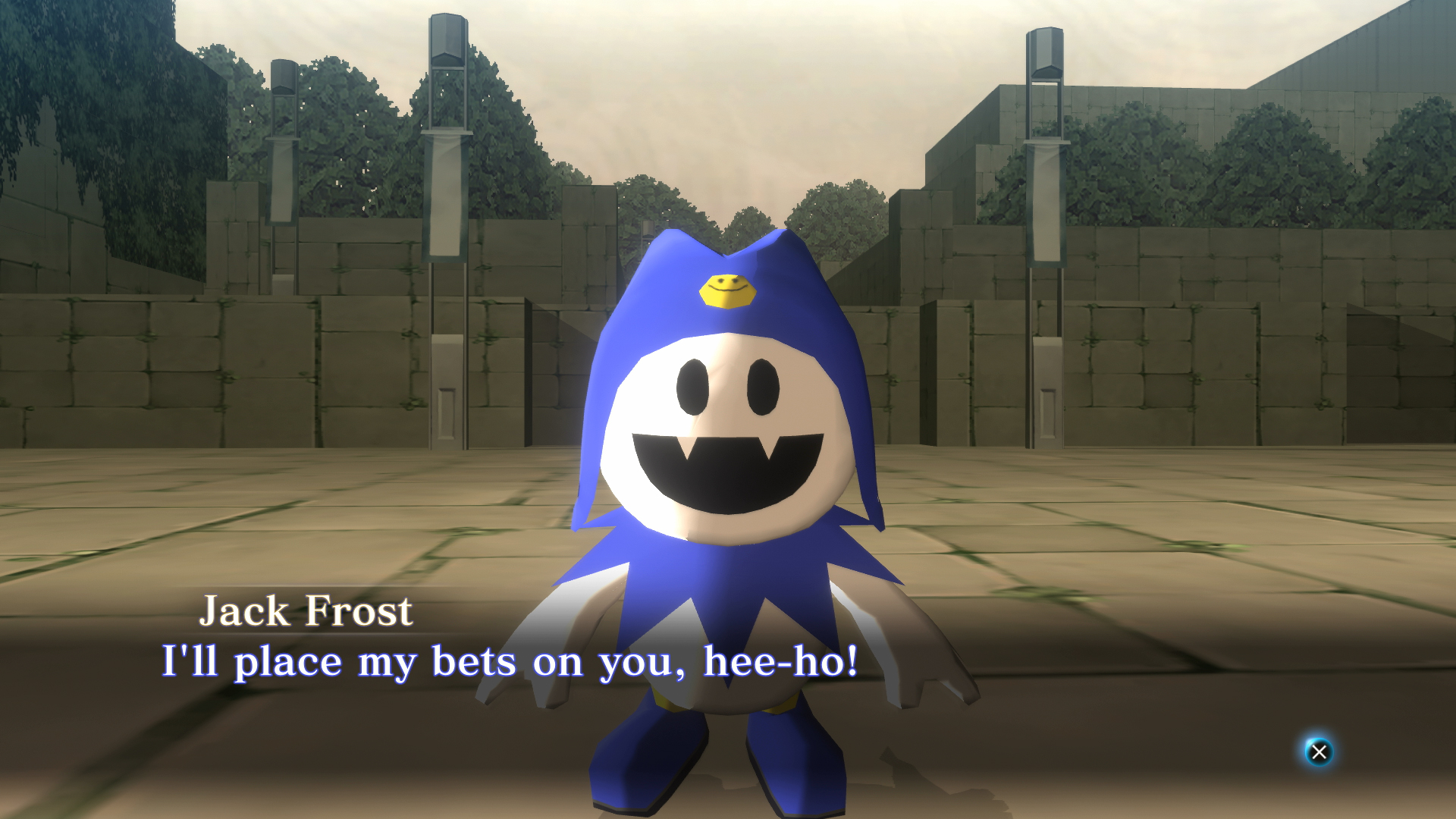
During battles, you’ll occasionally find yourself in negotiations with demons. Sometimes, you will start these conversations and sometimes not. Some requirements need to be met for this to happen, though. Many times, they will want to join your party or will try to bribe you to exit the battle. It’s certainly not like catching Pokémon! It requires more work to form your demon army.
However, you can only have one of each specific demon. For example, if you already have one Jack Frost and you try to negotiate with another one, you’ll be denied. Furthermore, you are limited to eight roster spots, but more can be added later in the game. Not much of a demon army… Anyway, as your demon levels up, there’s the potential that they will hand over an item as a gift of thanks. Sometimes, after a level gain, your ally will request a change to one of their skills. Sounds good, right? Well, it’s not always to your benefit. For example, say your demon ally wants to make a change and it happens to be a healing ability. If you agree to it, that ability would be replaced with something else (healing or non-healing) that’s potentially better or worse. You won’t know what’s changed until you give them permission to do it. It’s a gamble.
While you progress, a new mode unlocks that will change the way you form your team. Players will be able to fuse two demons together to make a new, more powerful one. Take that, Pokémon! Even better, the skills between the two demons can be inherited into the new demon ally. It’s a fun, alchemy-like mechanic that makes demon hunting interesting. Requirements are straightforward, too, including asking that the protagonist be at or above a specific level. That’s good because fusing your demons is essential, especially if you want to survive in the new world.
No Hand-Holding

Surviving in Tensei III can be tough at first, since it doesn’t give you a rundown on how the game works. Instead, you’ll have to rely on talking with non-playable characters (NPCs) to get answers or simply learn as you go. After battling a few bosses, you will soon figure out which demon ally to summon and how Magatama can benefit your battles. Otherwise, you can use the new easy mode, Merciful, to get your started. This mode doubles the damage players can make, reduces the damage taken by half and increases money after battles.
Dungeon exploring is tedious with backtracking and random battles frequently happening. Almost every area in the game is a battlefield, so don’t expect a safety zone to appear. Plus, save points are scarce. Although the remaster has the “suspend” option but because you have to restart the game when using suspend, quick saves is a better option and much needed in this game.
In some random battles, enemies can have the upper hand if they hit you with heavy attacks when you’re surprise-attacked or if you run into an area in the world map where you’re outclassed. In short, expect to perish and witness that Game Over screen many, many times on your adventure.
A Clear Choice
Shin Megami Tensei III Nocturne HD Remaster offers enough improvements and added content to show that a classic, turn-based RPG is still worth playing. Whether you’ve already played the original PlayStation 2 version or are a newcomer, ingest a Magatama and get ready for a wild, post-apocalyptic ride.
A PlayStation 4 review code supplied by Atlus for this review and gameplay footage.


